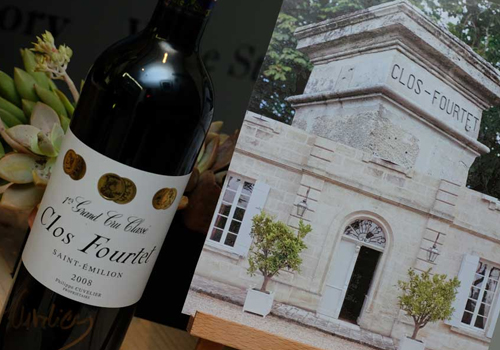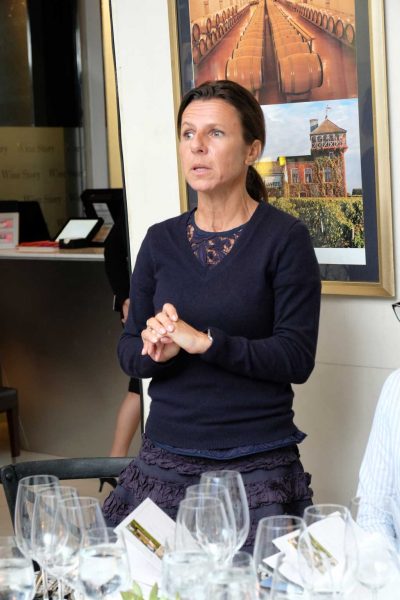More Bordeaux labels to discover - 2
Sherwin Lao | Aug 23, 2018

PREMIER GRAND Cru Clos Fourtet 2008 vintage
CLOS FOURTET, previously known as Chateau Clos Fourtet or even its most archived name Camfourtet (Camp Fourtet), has been an original Premier Grand Cru Saint-Emilion classified wine since the Bordeaux right bank initial classification in the mid 1950s. Clos Fourtet was one of only 12 original Premiers Grand Cru Classés, and one of the eight Classe B in the first Saint-Emilion Grand Cru classification. Clos Fourtet has also been spared from any form of controversy brought about by the 2006 classification, which was eventually junked for the latest 2012 version.
Just like many of its Saint-Emilion neighbors, Clos Fourtet does not have huge vineyards, and in their case, around 19 hectares — slightly smaller than those of Chateau Cheval Blanc and Chateau Angelus. Personally, I am not as familiar with Clos Fourtet as I am with other Saint-Emilion Grand Cru Classe brands, but what really stands out for me with Clos Fourtet is its label. The label carries images of three gold medals in their upper portion. These are not stickers added from awards won in recent wines competitions, but a regular fixture on their label. The only other Saint-Emilion label with gold medals that I know of is the ultimate Saint-Emilion wine of all time, Chateau Cheval-Blanc, which has two medals in its label, found at both sides of the mid portion. I found out that the three gold medals in the Clos Fourtet label represented the gold medals bestowed upon the wine in 1867 and 1900 at the Paris International Exhibition (Exposition Universelle de Paris), and in 1895 at the Bordeaux National and International Exhibition. It was in 1918 that Clos Fourtet decided to add images of these medals on the label. Meanwhile, Chateau Cheval Blanc’s two medals on its label come from the 1862 London International Exhibition and the 1867 Paris International Exhibition. Note that the 1867 Paris Exhibition was on its second staging, and came after the first Paris International Exhibition in 1855 under the initiative of Emperor Napoleon III of the Imperial Government of France at that period. This was the same exhibition or exposition that launched the breakthrough “mother of all wine classifications,” the Bordeaux Grand Cru classification (of Médoc wines). Clos Fourtet has therefore very good company with this 1867 medal proudly displayed on the label.
Clos Fourtet had been with a well-known wine family, the Lurtons, since 1949, but the estate was sold by owners Andri and Lucien Lurton to office supplies businessman Philippe Cuvelier in 2001 to overcome the French government’s costly inheritance tax law. Since the takeover, the Cuveliers have invested on improving the estate, with conscious focus on organic and biodynamic vineyard management and wine making.

SANDRINE ROCHE, Brand Ambassador of Clos Fourtet
Sandrine Roche, Brand Ambassador of Clos Fourtet, was present at this Wine Story Wine Dinner (which I wrote about in my last column), and shared the spotlight with Ludovic Fradin, the commercial director of Chateau Smith-Haut Lafitte, taking turns talking about their respective wineries and wines.
Here below are my customary Tasting Notes:
• Chateau Smith-Haut Lafitte Blanc 2005 Pessac-Leognan — 90% sauvignon blanc, 5% sémillon, 5% sauvignon gris; “lovely delicate nose, peach, white petal, buttered corn, some mintiness, very round and crisp on the palate, with delicious citrusy flavors at the end”; absolutely amazing, it may actually be my favorite wine of the night despite the presence of other reds.
• Chateau Smith-Haut Lafitte Rouge 2012 Pessac-Leognan — 55% cabernet sauvignon, 40% merlot, 4% cabernet franc, 1% petit verdot; “violets, rose, ripe berries, on the lighter side, very quaffable, fresh and juicy on the finish”
• Chateau Smith-Haut Lafitte Rouge 2005 Pessac-Leognan (magnum) — 64% cabernet sauvignon, 30% merlot, 5% cabernet france, 1% petite verdot; “alluring nose, cassis, vanilla, peppery, supple texture with friendly tannins, silky long berry finish”
• Clos Fourtet 2008 Saint-Emilion Grand Cru Classe B — 83% merlot, 9% cabernet sauvignon, 8% cabernet france; “rustic, plumy, needs aeration, opens up after more time, still really young and rigid, loaded with black currant, some stemminess at the end”
• Clos Fourtet 1989 Saint-Emilion Grand Cru Classe B — 85% merlot, 10% cabernet sauvignon, 5% cabernet france; “figs, echoing berries, still racy, earthy, peppercorn, velvety texture, mineral notes and a lengthy ripe finish”
Bordeaux wines are admittedly a handful to learn, but for the true hedonist, there is no substitute for superb wines, and Bordeaux wines represent the best of the best. Wine Story can be an intelligent place to start unraveling the top drops of Bordeaux. Clos Fourtet and Chateau Smith-Haut Lafitte are definitely two sure-bet, legit “under the radar” Grand Cru wines to explore.
Clos Fourtet and Chateau Smith-Haut Lafitte wines from the above mentioned vintages are available in all Wine Story stores: Serendra in The Fort, Taguig City, ShangriLa Mall in Edsa Mandaluyong, and One Rockwell West Tower in Makati. You can also visit their website at www.winestory.com.ph.
The author has been a member of the Federation Internationale des Journalists et Ecrivains du Vin et des Spiritueux or FIJEV since 2010. For comments, inquiries, wine event coverage, and other wine-related concerns, e-mail the author at protegeinc@yahoo.com. He is also on Twitter at twitter.com/sherwinlao.